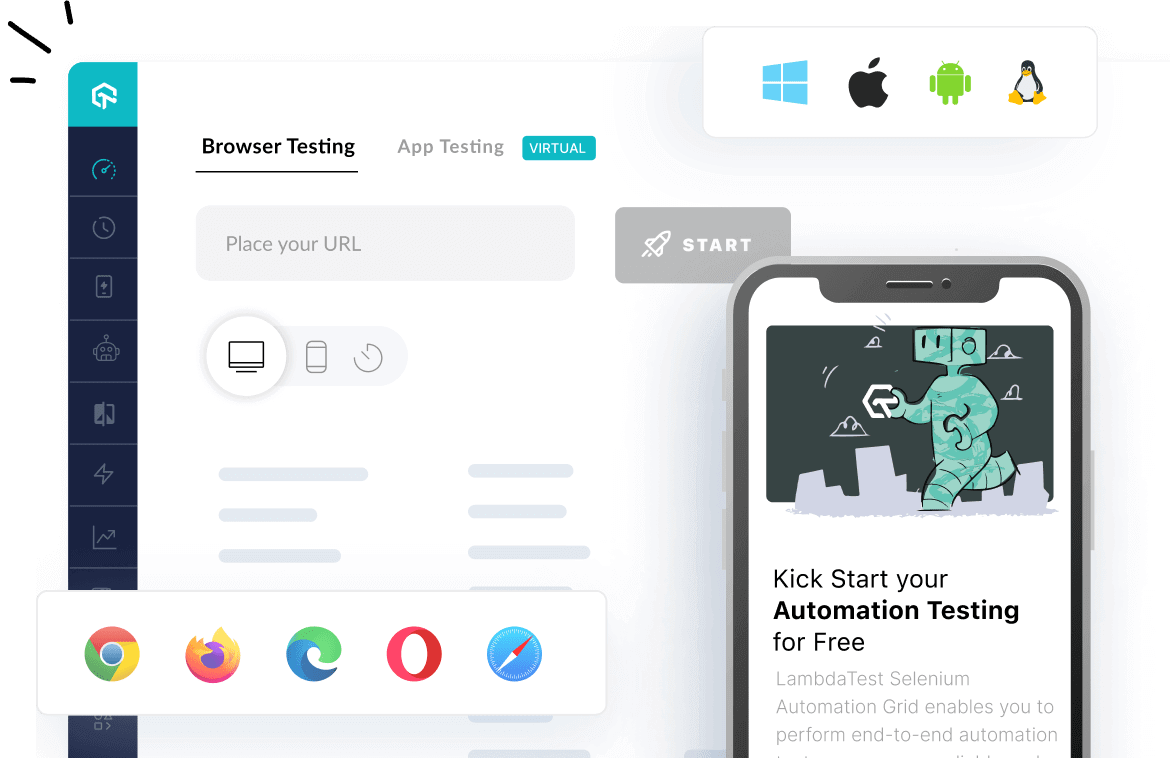How to use inheritIfRequired method in wpt
Best JavaScript code snippet using wpt
es6.regexp.constructor.js
Source: es6.regexp.constructor.js
...18 $RegExp = function RegExp(p, f) {19 var tiRE = this instanceof $RegExp,20 piRE = isRegExp(p),21 fiU = f === undefined;22 return !tiRE && piRE && p.constructor === $RegExp && fiU ? p : inheritIfRequired(CORRECT_NEW ? new Base(piRE && !fiU ? p.source : p, f) : Base((piRE = p instanceof $RegExp) ? p.source : p, piRE && fiU ? $flags.call(p) : f), tiRE ? this : proto, $RegExp);23 };24 var proxy = function(key) {25 key in $RegExp || dP($RegExp, key, {26 configurable: true,27 get: function() {28 return Base[key];29 },30 set: function(it) {31 Base[key] = it;32 }33 });34 };35 for (var keys = gOPN(Base),36 i = 0; keys.length > i; )...Using AI Code Generation
1var wptoolkit = require('wptoolkit');2var parent = {3};4var child = {5};6var resultObject = wptoolkit.inheritIfRequired(parent, child);7var resultObject = wptoolkit.inheritIfRequired(parent, child, true);8var resultObject = wptoolkit.inheritIfRequired(parent, child, false);9var resultObject = wptoolkit.inheritIfRequired(parent, child, true, true);10### <a name="wptoolkit.inherit"></a>wptoolkit.inherit(parent, child, isChildRequired) ⇒ <code>object</code>11**Kind**: static method of [<code>wptoolkit</code>](#wptoolkit) Using AI Code Generation
1var wptoolkit = require('wptoolkit');2var util = require('util');3function Person(name, age) {4 this.name = name;5 this.age = age;6}7Person.prototype.printDetails = function () {8 console.log(util.format('Name: %s, Age: %s', this.name, this.age));9}10function Employee(name, age, salary) {11 wptoolkit.inheritIfRequired(this, Person, arguments);12 this.salary = salary;13}14Employee.prototype.printDetails = function () {15 console.log(util.format('Name: %s, Age: %s, Salary: %s', this.name, this.age, this.salary));16}17function Manager(name, age, salary, teamSize) {18 wptoolkit.inheritIfRequired(this, Employee, arguments);19 this.teamSize = teamSize;20}21Manager.prototype.printDetails = function () {22 console.log(util.format('Name: %s, Age: %s, Salary: %s, Team Size: %s', this.name, this.age, this.salary, this.teamSize));23}24var person = new Person('Ravi', 30);25person.printDetails();26var employee = new Employee('Ravi', 30, 50000);27employee.printDetails();28var manager = new Manager('Ravi', 30, 50000, 10);29manager.printDetails();30var person2 = new Person('Ravi', 30);31person2.printDetails();32var employee2 = new Employee('Ravi', 30, 50000);33employee2.printDetails();34var manager2 = new Manager('Ravi', 30, 50000, 10);35manager2.printDetails();Using AI Code Generation
1var wptoolbox = require('wptoolbox');2var fs = require('fs');3var path = require('path');4var util = require('util');5var TestClass = function() {6 this.testProperty = "testProperty";7 this.testMethod = function() {8 console.log("testMethod");9 }10}11var InheritedTestClass = function() {12 this.inheritedTestProperty = "inheritedTestProperty";13 this.inheritedTestMethod = function() {14 console.log("inheritedTestMethod");15 }16}17var testClass = new TestClass();18var inheritedTestClass = new InheritedTestClass();19wptoolbox.inheritIfRequired(testClass, inheritedTestClass);20console.log(testClass.testProperty);21testClass.testMethod();22console.log(testClass.inheritedTestProperty);23testClass.inheritedTestMethod();24var wptoolbox = require('wptoolbox');25var fs = require('fs');26var path = require('path');27var util = require('util');28var TestClass = function() {29 this.testProperty = "testProperty";30 this.testMethod = function() {31 console.log("testMethod");32 }33}34var InheritedTestClass = function() {35 this.inheritedTestProperty = "inheritedTestProperty";36 this.inheritedTestMethod = function() {37 console.log("inheritedTestMethod");38 }39}40var testClass = new TestClass();41var inheritedTestClass = new InheritedTestClass();42wptoolbox.inheritIfRequiredSync(testClass, inheritedTestClass);43console.log(testClass.testProperty);44testClass.testMethod();45console.log(testClass.inheritedTestProperty);46testClass.inheritedTestMethod();47var wptoolbox = require('wptoolbox');48var fs = require('fs');49var path = require('path');50var util = require('util');51wptoolbox.isDirectory(__dirname, function(err, isDirectory) {52 if (err) {Using AI Code Generation
1var wptoolkit = require('wptoolkit');2var myClass = function(){3 this.test = function(){4 console.log('test');5 }6}7var myChildClass = function(){8 this.test = function(){9 console.log('test child');10 }11}12wptoolkit.inheritIfRequired(myClass, myChildClass);13var obj = new myChildClass();14obj.test()Using AI Code Generation
1var wptoolkit = require('wptoolkit');2var fs = require('fs');3var fileData = fs.readFileSync('test.json');4var jsonObject = JSON.parse(fileData);5var output = wptoolkit.inheritIfRequired(jsonObject);6console.log(output);7{8 "cars": {9 }10}Using AI Code Generation
1var wptools = require('wptools');2var util = require('util');3function Animal(name) {4 this.name = name;5 this.sleep = function() {6 console.log(this.name + ' is sleeping');7 };8}9function Cat(name) {10 this.name = name;11}12util.inherits(Cat, Animal);13var kitty = new Cat('Kitty');14kitty.sleep();15## util.inspect()16var wptools = require('wptools');17var util = require('util');18var obj = {19 inspect: function() {20 return 123;21 }22};23console.log(util.inspect(obj));24## util.isArray()25var wptools = require('wptools');26var util = require('util');27var arr = [1, 2, 3];28console.log(util.isArray(arr));29## util.isRegExp()30var wptools = require('wptools');31var util = require('util');32var re = /ab+c/;33console.log(util.isRegExp(re));34## util.isDate()35var wptools = require('wptools');36var util = require('util');37var date = new Date();38console.log(util.isDate(date));Blogs
Check out the latest blogs from LambdaTest on this topic:
Have you ever struggled with handling hidden elements while automating a web or mobile application? I was recently automating an eCommerce application. I struggled with handling hidden elements on the web page.
As part of one of my consulting efforts, I worked with a mid-sized company that was looking to move toward a more agile manner of developing software. As with any shift in work style, there is some bewilderment and, for some, considerable anxiety. People are being challenged to leave their comfort zones and embrace a continuously changing, dynamic working environment. And, dare I say it, testing may be the most ‘disturbed’ of the software roles in agile development.
Pair testing can help you complete your testing tasks faster and with higher quality. But who can do pair testing, and when should it be done? And what form of pair testing is best for your circumstance? Check out this blog for more information on how to conduct pair testing to optimize its benefits.
With the rise of Agile, teams have been trying to minimize the gap between the stakeholders and the development team.
 QA testers have a unique role and responsibility to serve the customer. Serving the customer in software testing means protecting customers from application defects, failures, and perceived failures from missing or misunderstood requirements. Testing for known requirements based on documentation or discussion is the core of the testing profession. One unique way QA testers can both differentiate themselves and be innovative occurs when senseshaping is used to improve the application user experience.
QA testers have a unique role and responsibility to serve the customer. Serving the customer in software testing means protecting customers from application defects, failures, and perceived failures from missing or misunderstood requirements. Testing for known requirements based on documentation or discussion is the core of the testing profession. One unique way QA testers can both differentiate themselves and be innovative occurs when senseshaping is used to improve the application user experience.
Automation Testing Tutorials
Learn to execute automation testing from scratch with LambdaTest Learning Hub. Right from setting up the prerequisites to run your first automation test, to following best practices and diving deeper into advanced test scenarios. LambdaTest Learning Hubs compile a list of step-by-step guides to help you be proficient with different test automation frameworks i.e. Selenium, Cypress, TestNG etc.
LambdaTest Learning Hubs:
- JUnit Tutorial
- TestNG Tutorial
- Webdriver Tutorial
- WebDriverIO Tutorial
- Protractor Tutorial
- Selenium 4 Tutorial
- Jenkins Tutorial
- NUnit Tutorial
- Jest Tutorial
- Playwright Tutorial
- Cypress Tutorial
- PyTest Tutorial
YouTube
You could also refer to video tutorials over LambdaTest YouTube channel to get step by step demonstration from industry experts.
Try LambdaTest Now !!
Get 100 minutes of automation test minutes FREE!!

